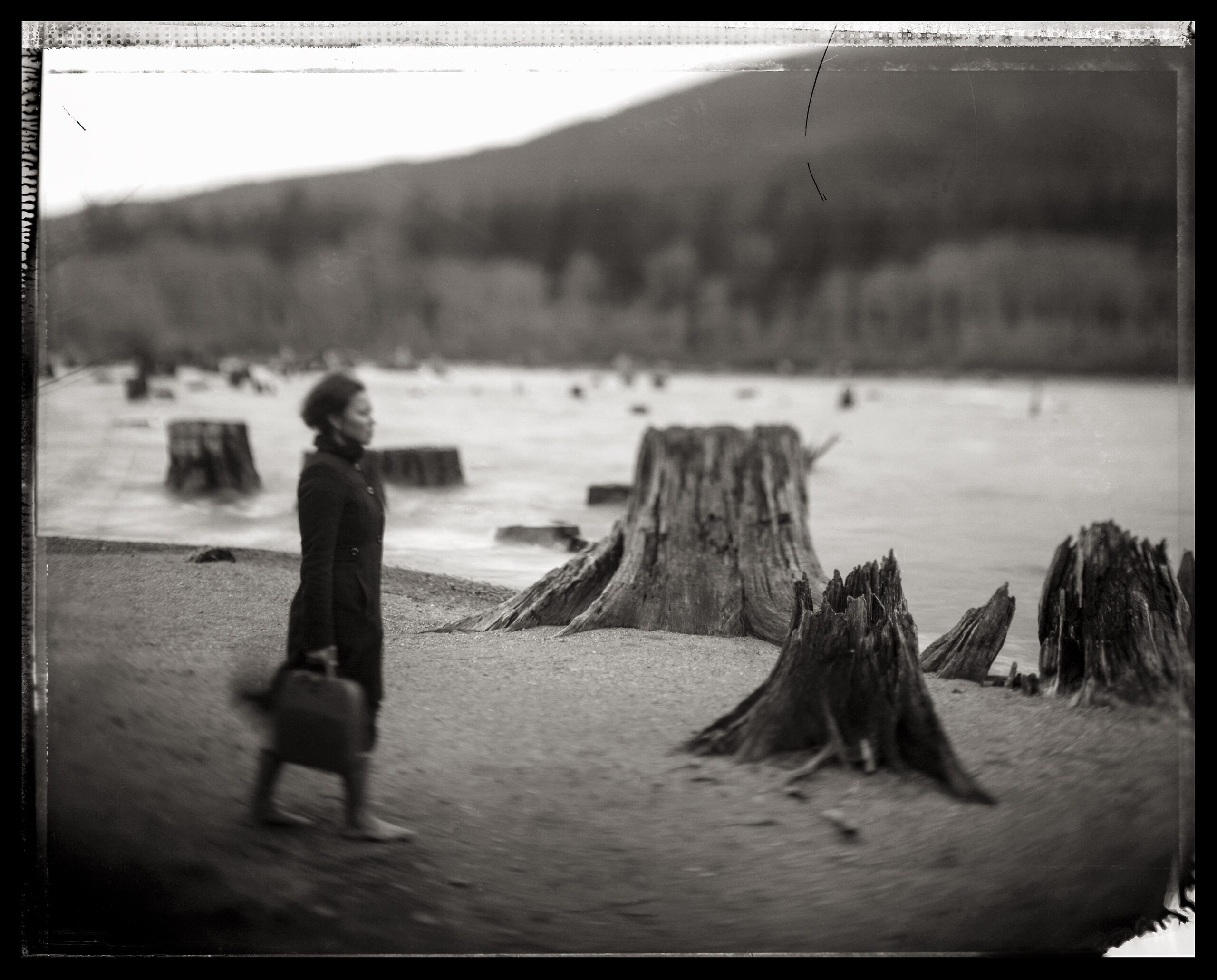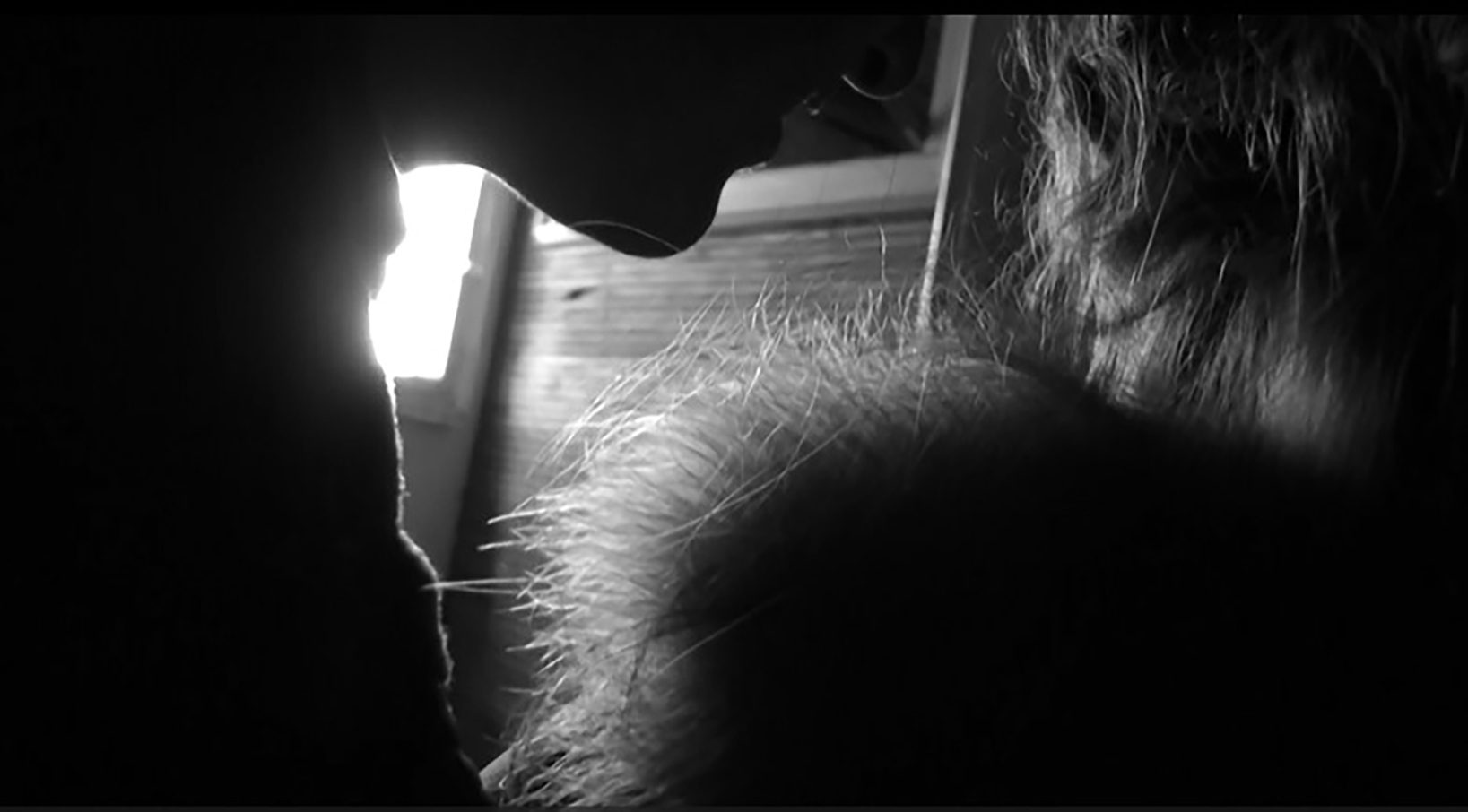6 - 8 pm
January 3, 2025
First Friday Art Walk

Images, from top: Ray (detail), 2015; Rattlesnake Lake I, 2000-2013
Tomiko Jones: The Intimate Infinite presents lens-based explorations of place, both interior and exterior, intimate and vast. Utilizing contemporary digital photography, traditional cyanotype processes, and inspired by the traditional Japanese printmaking technique of ukiyo-e, Jones creates a dialogue between the natural environment and her personal narrative. In this way, Jones urges viewers to rediscover the complex and nuanced landscapes captured in her work and create new connections to them. As the nation grapples with issues of environmental degradation, social justice, and the complexities of national identity, The Intimate Infinite challenges us to reflect on our relationship with the land and each other.
Featuring nine bodies of work spanning twenty years of art making, Tomiko Jones: The Intimate Infinite was curated by Cecily Cullen.
Tomiko Jones’ enchanting exhibition, The Intimate Infinite, provokes questions about the human relationship with the landscape. The exhibition features lens-based investigations of place, both significant outdoor expanses and intimate interior spaces. Through photographic interventions that traverse time and notions of belonging, Jones’ work journeys through landscape, chronicling passage from interior to exterior, known and unknowable. This work reflects historical modes of artmaking while imbuing a contemporary urgency and relevance.
Through an exploration of lands that have personal significance as they relate to Jones’ family heritage, as well as sites of national significance such as national parks and the U.S. / Mexico border, Jones takes an anthropological approach to her art practice. Her work is grounded in researching how humans interact with the land and each other in public and private spaces. Many of the works are self-portraits of sorts and a reflection of her contemplation of the individual’s role in the relationship between site and self.
Each of the works in the exhibition are conceptualized and realized with a great degree of artistry and a love of materials. Archival and sustainable materials of the highest quality convey the artist’s deep respect for her subject matter and imbue each work with the importance of a treasured artifact. Many different photographic processes, both traditional and contemporary techniques, are employed based on how best to represent a particular question.
With the inclusion of works that present the artist’s ancestry, both in overt and subtle ways, Jones has uncovered truths about belonging – who belongs, who decides and by what means. This plays out in Passage, a series that pays tribute to objects of the everyday that are anchored in the home, a place of safety and acceptance. These works honor the artist’s connection to her maternal grandmother and her life as a Japanese American. In the series, Excavate, Jones visits internment camps where Japanese and Japanese Americans were incarcerated during and after WWII, including some of her family members. The works in Excavate reveal only what can be interpreted from the distance of time. Remnants of lost cultural objects and dismantled sites are represented beneath a veil of mystery similar to the fog of memory.
The splendor and beauty of spectacular landscapes can be seen in many of the works as metaphor for an ideal that may no longer exist or may never have. The works in These Grand Places address the rapidly changing landscapes of public lands due to a Western perspective based on the idea that natural resources are there for the reaping. Here the question of belonging again underscores the basis of the work – who are public lands truly for and who can safely enjoy them? Who does this land belong to, and who decides? Further, how do we use these lands without, in Jones’ words “loving them to death”?
These questions form a starting point for an artist with a demonstrated passion for the natural world, exploring human connection, and the art of making. Through the study of materials and processes, Tomiko Jones’s work continues to evolve through the years, developing new questions, exploring a rich tapestry of media, and building upon traditional technologies to expand the contemporary expression of photo-based artwork.
We partnered with librarians from Denver Public Library to create a list of recommended books to read if you’re interested in learning more about the themes presented in the artwork on view in The Intimate Infinite. Want to check one out from the library? Click on the title and it will take you to the book’s page in the library’s catalog. The entire list can be found here: The Intimate Infinite Reading List
Pictures of the Floating World: An Introduction to Japanese Prints by Sarah E. Thompson
Free the land: How We Can Fight Poverty and Climate Chaos by Audrea Lim
Camera Geologica: An Elemental History of Photography by Siobhan Angus
Saving Yellowstone: Exploration and Preservation in Reconstruction America by Megan Kate Nelson
Sun Gardens: Cyanotypes by Anna Atkins ,Text by Larry J. Schaaf
Path of Light: A Walk Through Colliding Legacies of Glen Canyon by Morgan Sjogren
The Literature of Japanese American Incarceration by Frank Abe and Floyd Cheung
When Women Were Birds, by Terry Tempest Williams
A Tale for the Time Being by Ruth Ozeki
The Garden of Evening Mists by Tan Twan Eng
Forgotten Country by Catherine Chung
The Summer Book by Tove Jansson
Call Them by Their True Names by Rebecca Solnit
Ceremony by Leslie Marmon Silko
Titles Available through WorldCat:
A Field Guide to Getting Lost by Rebecca Solnit
Arts of Living on a Damaged Planet

CVA’s 965 Project Gallery presents Chrissy Espinoza: [un]earthing the [un]conscious, an exhibition that invites us to explore the unseen dimensions of our inner world, prompting us to move beyond physical boundaries in pursuit of self-understanding. By connecting with the whispers of our spiritual landscapes, the work of Chrissy Espinoza offers a moment to reflect, ground, and embrace the transformative potential of introspection. un]earthing the [un]conscious was curated by MSU Denver students Bridget Ebert and Alyssa Williams.
The 965 Project Gallery at CVA is a student-led space that provides immersive professional development opportunities to MSU Denver students interested in fine art curation and arts administration.